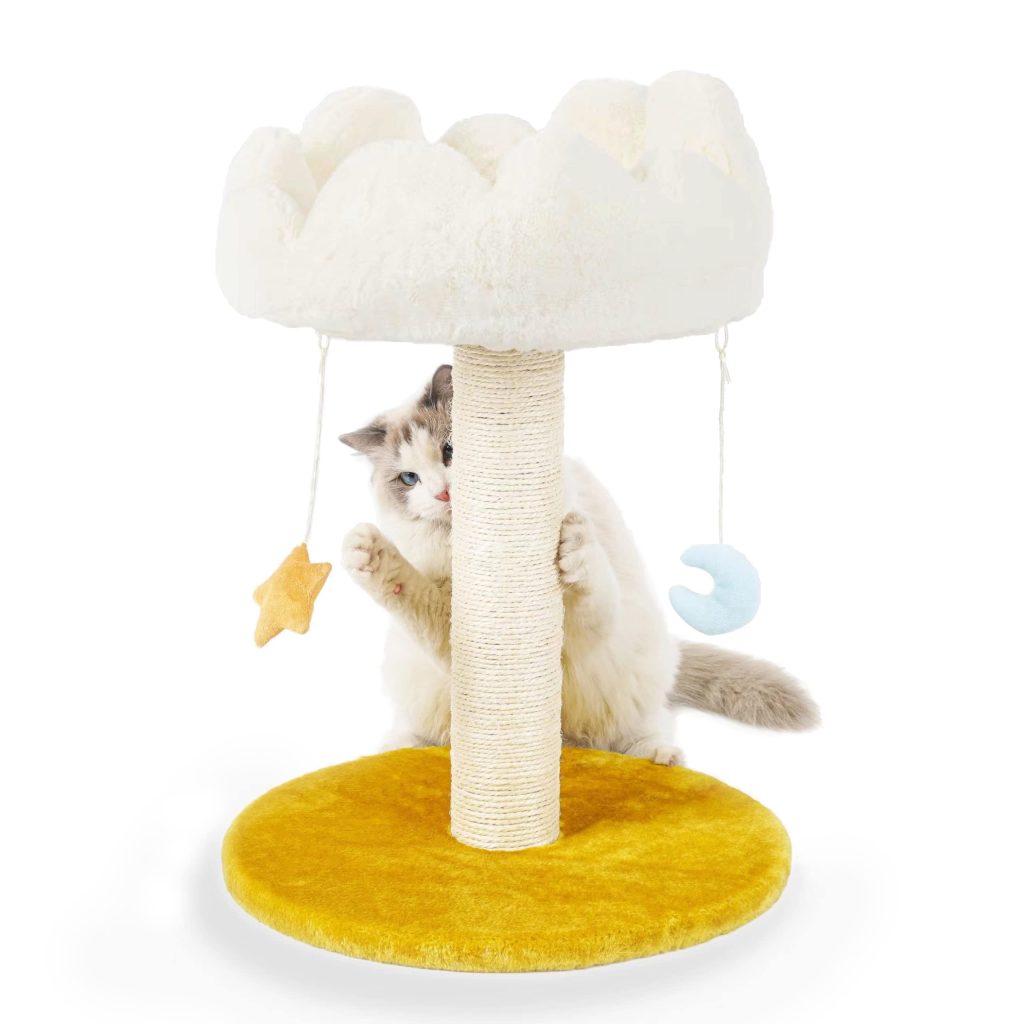
Understanding Feline Hearing and Attention
Ever noticed how your cat’s ears perk up when they hear the crinkling of a treat bag? That’s your clue to their remarkable sense of hearing, which can be your best friend when teaching them to respond to their name. Cats have the ability to discern even the slightest of sounds, tuning in to frequencies and tones we humans can hardly detect. That is why they may seem to ignore you at times; they’re not being snobby – they’re simply more interested in a more captivating sound far beyond our perception.
But how does this relate to getting their attention? Well, consider your cat’s ears like sophisticated radar dishes, constantly on the move, swiveling toward the source of a sound. When you call out their name, you are competing with a world full of auditory stimuli. It very important to realize that unlike dogs, who have evolved as pack animals and are naturally inclined to follow the leader, cats are solitary hunters. Their response to hearing their name won’t be to please you but rather because they’ve learned, through the right training, to associate that sound with something rewarding.
When it comes to grabbing their attention, the pitch and tone of your voice can make all the difference. Cats tend to prefer higher-pitched, softer sounds, as these resemble the vocalizations of their own species (think about the urgent tone of a meow when they’re hungry). So next time you call your kitty, keep your voice light and inviting. Your cat’s acute sense of hearing will tune in, and you become more interesting than that pesky fly buzzing on the other side of the room.
But, be aware, feline attention is a fleeting thing, often compared to that of a curious toddler. If your cat does grace you with their focus, remember, you have a short window to make an impression before they’re back to their own important feline business. This window is where the magic happens, where you can build that unique line of communication that strengthens your bond with your whiskered companion.
Choosing the Right Name for Trainability
Think the name you choose for your cat as a sort of training tool. A name that’s easy for your cat to learn and recognize can set the stage for successful communication between the two of you. Your cat is more likely to respond to names that have certain sounds that cats naturally react to. For instance, cat behavior experts suggest that names with an “ee” sound, like Mimi or Ziggy, tend to attract feline attention more than others – it’s all about those high-pitched sounds that their ears are so attuned to pick up.
Shorter names, with one or two syllables, are not only easier for you to call out but also simpler for your cat to understand. Ponder about it: a name like “Bella” is quicker to register and easier to distinguish from the background noise, compared to a longer, more complex name like “Alexander the Great”. Cats are masters of efficiency; a short name matches the straightforwardness of their preferred communication style.
Keep the name consistent, too. If you’ve adopted an older cat or you are thinking of changing your cat’s name for any reason, consistency is key to retraining them. Don’t confuse your cat with multiple nicknames or variations of their name; stick to one name and repeat it often. Over time, they’ll start associating that specific sound with interactions involving you, making training much smoother.
Remember, while a name this is too common, like Kitty or Cat, might seem like an obvious choice, it might not be the most effective. Imagine you’re at the park calling “Kitty” – any cat around is likely to turn its head. You want your cat’s name to be distinctive enough that they learn to recognize it as their own unique call to action.
In essence, the right name can be like a sonic key that helps unlock your cat’s attention. It should be music to their ears – quite literally – and fun for you to say as well. A name you enjoy calling out is one you’ll likely use more often, which reinforces its significance for your cat, ensuring a faster and more effective learning process.
Once you have the perfect name secured, you’ll be all set to begin the real work: starting the rewarding journey of training your cat to come when called. And before you know it, you’ll have a fluffball of fur running towards you—not just out of curiosity, but also out of recognition and a growing bond fostered by the right choice of name.

Steps to Positive Reinforcement Training
Positive reinforcement training with your furry friend can be an enjoyable and fruitful endeavor. The key is to create a positive association with the sound of their name so that hearing it becomes a signal for something pleasant. Here are some steps to guide you through this process:
- Arm yourself with your cat’s favorite treats—those irresistible bits they can’t say no to. These will be your primary tool for reinforcement.
- Start a training session when your cat is alert but not too distracted. You want their attention but don’t want to compete with their mealtime or that laser pointer’s red dot.
- With a treat in hand, say your cat’s name in a clear, enthusiastic tone. Reward them immediately after you say their name, regardless of their response, to build the initial association.
- As they begin to show signs of recognition—like perking their ears or turning their head—only give treats when they actually come towards you in response to their name.
- Once they reliably come to you from a short distance, start calling them from farther away. This enhances their recall and reinforces the behavior in different scenarios.
- Train in various environments with varying levels of distraction to strengthen their response. Always aim for success, and dial back if your cat becomes overwhelmed.
- While treats are compelling, they shouldn’t be the only reward. Alternate with toys, petting, or verbal praise so they don’t associate responding to their name exclusively with food.
- Cats have short attention spans, so training sessions should be brief and end on a high note to keep them engaged and looking forward to the next one.
- Regular practice very important. Carve out time each day for these mini training sessions to cement the behavior.
Through these steps, remember to remain patient and never scold your cat for not responding. This could create a negative association with their name and derail your progress. Focus on creating a fun, stress-free environment, and celebrate the small victories as your cat begins to understand that responding to their name is a doorway to delightful outcomes.
The result isn’t just a well-trained cat; it’s an enhanced bond between you and your feline friend. As your cat learns that responding to their name yields positive experiences, their trust in you will deepen. And there’s nothing quite as rewarding as your kitty trotting over to you in response to their name, their eyes bright with recognition and anticipation.
Troubleshooting Common Training Challenges
So you’ve armed yourself with a pocket full of treats and mastered the high-pitched voice that gets your cat tilting their head in your direction. But what happens when, despite your best efforts, your furball simply stares at you blankly, or worse, saunters off in the opposite direction? Don’t fret; encountering bumps along the road to training your cat is completely normal. Let’s explore some common challenges and how to navigate them.
Consistency Is Key: If you call your cat’s name with no follow-up action too often, they might learn to ignore it. Ensure that there’s always a good reason for them to respond. Whether it’s treat time or just a cuddle, make it worth their while. If several family members are involved in the training, confirm everyone uses the same name in the same way to prevent confusion.
Overcoming Distractions: If your kitty’s attention is constantly hijacked by squirrels outside the window or the hum of the refrigerator, it’s time to minimize distractions. Close the curtains or train in a quiet room. As your cat becomes more responsive, gradually reintroduce these distractions, so they learn their name is more important than the outside world’s hustle and bustle.
The Treat Dilemma: Relying solely on treats can lead to a pampered kitty with some added padding around their midsection. Balance is vital. Mix it up with playtime, affection, or a game of chase, ensuring your pet stays active and engaged. If treats are your go-to, opt for small, low-calorie options and ponder their daily intake to avoid overfeeding.
What’s In It For Me?: Cats are famously self-interested. If they don’t see the benefit in responding, they probably won’t. Apart from food and affection, sometimes what your cat wants is a bit of alone time or a quiet nap. Pay attention to what your cat enjoys and incorporate those preferences as rewards for responding to their name.
Age Matters: If you’re working with a kitten, congratulations! They’re usually more malleable and eager to please. However, if you’ve opened your home to an older cat, patience is even more crucial. They might be set in their ways, and old habits die hard. Stay persistent with gentle encouragement and never resort to punishment or frustration; negativity will only backfire.
- Sometimes, it’s not about getting your cat to come over but to acknowledge you first. Reward eye contact to establish a connection before expecting them to walk over. Once they consistently look at you when you call, up the ante by waiting for a few steps in your direction.
- If your cat doesn’t respond, wait a moment before trying again. Calling their name repeatedly in quick succession can turn it into background noise. You want to avoid numbing them to the sound of their name.
- Your body language can speak volumes to your cat. If you seem tense, they’ll likely pick up on that energy and might not feel encouraged to approach. Keep your demeanor relaxed and inviting.
In the dance of “name response” training, sometimes it’s two steps forward, one step back. By addressing these common issues using patience, creativity, and positive reinforcement, you’ll set the stage for a lifetime of mutual understanding. And remember, every cat has its own personality. Embrace these quirks, and you’ll find that training becomes less about the challenges and more about the unique journey you share with your clever companion. On this path, the surprises just make victory even sweeter when your cat finally saunters over in response to their name, with an expression that might just be saying, “What took you so long?”







